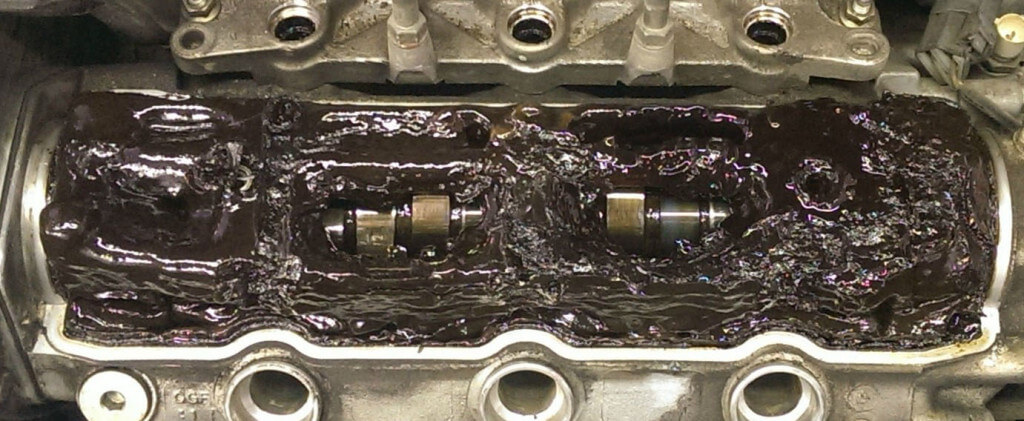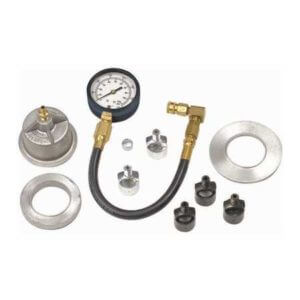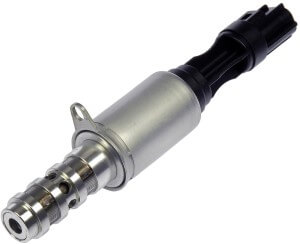Ford 5.4 camshaft code and misfire
Diagnose and fix a Ford 5.4 camshaft code and misfire
If you have a Ford 5.4 camshaft code, lean condition or misfires, this article is for you. Late model Ford 5.4 engines use variable valve timing (VVT)

Ford Variable Valve Timing Mechanism
mechanisms to advance and retard timing to correspond to driver demand. The VVT systems work by pulsing oil pressure into an hydraulic mechanism that advances and retards the camshaft. The pulsing is performed by a solenoid which is commanded by the PCM.
Using the recommended oil viscosity and type and changing the engine oil on time is CRITICAL to the operation of the VVT system. The entire VVT system is calibrated to the recommended oil viscosity. If you use a thicker or thinner viscosity, the VVT system will over or under advance, causing camshaft related trouble codes, lean or rich condition trouble codes and cylinder misfires.
If you don’t change your oil on time, sludge builds up in the oil galleries and plugs the small orifices in the VVT solenoids, causing the same camshaft related trouble codes, lean or rich condition trouble codes and cylinder misfires. Once sludge buildup occurs, it’s almost impossible to make this system run properly. Even if you perform an engine flush, you’ll still have debris breaking loose over time and clogging the VVT solenoids.

Sludge buildup
Start by checking oil pressure
Since the VVT system depends on the proper oil pressure,

Oil pressure test gauge
perform an oil pressure test first. The oil pressure test port is behind the power steering pump. Remove the plug and install a mechanical oil pressure gauge. With the engine at operating temperature, you should see 24-psi at idle speed. If the oil pressure is BELOW 25-psi, the VVT system will malfunction. Neglecting oil changes will cause wear on the camshaft and camshaft journals and a corresponding drop in oil pressure. If your engine passes the oil pressure test, move on to the valve cover inspection.
Remove the valve covers to inspect for sludge
The driver’s side valve cover is the easiest to remove and the findings from that side will be applicable to the other bank as well. Look for accumulation of thick black pudding-like buildup. At that point, it’s best to install a new or used engine. This one will never work properly even if you clean out the sludge—the damage has already been done. If the oil pressure is good and the engine is clean, move on to the VCT solenoid test.
Test VCT solenoid
A VCT solenoid is installed near the front end of each

New cam phaser
valve cover. Remove the electrical connector and provide brief power and ground to each solenoid while the engine is running. The solenoid should make an audible click. If it doesn’t the solenoid is bad. If you notice the engine smoothing out, the solenoid was probably stuck and should be replaced. Remove the solenoid and check for debris in the passages.
Why the VCT causes camshaft codes
The computer commands a certain amount of advance or retard to the VVT system. Then the PCM checks the camshaft position sensors to see if the commands return the expected results. If the VVT system isn’t working properly, you’ll see a camshaft position sensor correlation error trouble code. But that’s NOT the CAUSE of the problem, so don’t start replacing camshaft sensors! Since the camshafts aren’t in the correct positon, you’ll also get misfires and lean or rich trouble codes. Don’t chase the symptoms!!!! This all starts with the VVT system. If it isn’t working properly, replacing spark plugs and camshaft sensors won’t fix it.
©, 2018 Rick Muscoplat
Posted on by Rick Muscoplat
